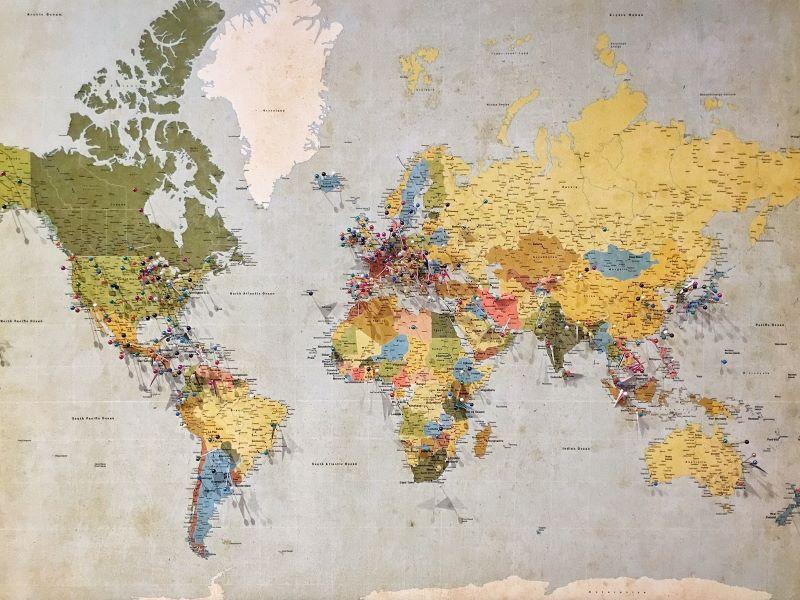In the third part of this series offering advice on decolonising the teaching of medicine, we discuss the importance of uncovering the full picture, surfacing silenced voices and information that have long been left out of curricula.
Unearthing inventors or inventions, events and issues that may not have been documented accurately or comprehensively is a big task. As educators, we need to be mindful and agile in actively searching for holistic information and hidden, silenced or sidelined voices.
- Does decolonisation in the West do anything for the developing world?
- On achieving equality, diversity and inclusion: challenging Islamophobia across higher education
- Decolonising the curriculum – how do I get started?
This collaborative resource, which brings in student perspectives, provides examples on how to take the initiative to try to uncover the full picture. Several questions can help with this process:
Whose voices are silenced in your teaching material?
When examples of scientists and inventors are provided in the classroom, they are often portrayed for their excellence, inventions or contributions to specific fields. Lecturers are either unaware or leave out the potentially “ugly” parts of how progress has been made. Acknowledging colonialism and the long-lasting negative impact it has had on racialised and marginalised communities would require the acknowledgement that much of our knowledge and higher education is also built on a colonial foundation.
In medicine, James Marion Sims is an apt example because he has been widely celebrated in medicine as the hero of modern surgical gynecology. He is lauded for the development of surgical techniques that his predecessors failed at, and tools such as the speculum, used today for vaginal examinations. Undoubtedly, women are benefitting from the knowledge he produced through his research. Classroom discussions would typically revolve around his expertise, successes, resilience and brilliance.
Keep asking questions: Yet we need to ask: how did he perfect his techniques? Were they ethical? Where are the records of those voices that were part of his surgical experimentation? Sims had practised his techniques on a group of enslaved African American women, performing his surgeries without anaesthetic while using anaesthetic when later operating on white women. Some of the names of these women who were misused for the purpose of medical research were Anarcha, Betsy and Lucy.
Don’t hide the ugly parts: While important to acknowledge the advancement in surgical gynaecology, it is equally important to elevate the voices of people who were unjustly treated or oppressed in the name of scientific advancement. These stories might be difficult to tell or read but omitting them and presenting only the success or positive stories continues to perpetuate the violence and oppression marginalised groups have faced in medical history. This is relevant to contemporary medicine and across all disciplines.
Search actively for objective narratives: Educators must look for sources that paint an accurate picture of the ethically dubious practices of researchers in the past rather than simply glorifying their achievements. A good example comes from an article in the New York Times about Saul Krugman, focusing on his immense contributions to paediatric immunology, which resulted in the development of vaccines for hepatitis and measles, helping millions. However, it does not properly hold Krugman accountable for his role in the controversial Willowbrook study in which disabled children, mostly lacking a social safety net to protect them, were given faecal matter to purposely infect them with hepatitis and study its effects. Educators must acknowledge the failures of the past, include voices outside the Eurocentric lens and make judicious selection of sources.
Who are the hidden figures that need to come to light?
There is a false assumption that knowledge is produced and disseminated in the Global North. This makes it a responsibility of educators to provide examples of hidden figures whose contributions to the advancement of their field have been systematically unrecognised. But teachers should go further, not only giving proper credit to hitherto unrecognised figures but also making students aware of the epistemicide of knowledge from marginalised groups and the Global South throughout history.
This allows students to critically analyse information they may otherwise accept passively as the objective truth, when in reality it is often clouded by stories told from a colonial lens, particularly in medicine.
Search actively for unrecognised voices: A simple Google search highlights multiple sources pointing to Jonas Salk as the principal inventor of the polio vaccine. An article in History celebrates his contribution to the discovery of the vaccine and his life. However, delving deeper you will find the significant role of multiple African American researchers, including Russel W. Brown, the director of Tuskegee’s Carver Research Institute, and his assistant James Henderson. Aided by cell culture supervisor Norma Gaillard and Maria Telkes, who developed a packaging solution to keep cells cool during transport, they created the first “HeLa cell factory”. Despite their groundbreaking intellectual and practical contribution to the development of the vaccine, the names of these scientists are rarely mentioned or known. It is not unlikely that it is because of the researchers’ race and gender. These scientists must be celebrated in the classroom, not just for the sake of diversity but for the authentic contributions they have made, which have been hidden and unrecognised.
Search actively for voices who are not credited: It is of note that “HeLa cells” themselves derive from the body of a black woman, Henrietta Lacks. Despite her immortal cell lines continuing to allow innovative research, Lacks’ contribution, through the cancer that ultimately killed her, is often hidden in both research and derived lectures. She gave no consent, and her family is yet to receive any compensation, despite many discoveries coming from and scientists profiting from the research she facilitated.
With these examples in mind, it is clear that lecturers need a deeper understanding of the history of colonisation in education and research, which will encourage them to uncover the truth: that contributions exist beyond the white, male, cishet perspective. Lecturers’ understanding of the ethical and educational failures of the past will create more open-minded, critically astute students. This will play a pivotal role in decolonising education and driving research forward.
Musarrat Maisha Reza is senior lecturer in biomedical sciences, and Emily Calvo-Hobbs is a second-year medical sciences student, both at the University of Exeter.
If you found this interesting and want advice and insight from academics and university staff delivered direct to your inbox each week, sign up for the THE Campus newsletter.




comment